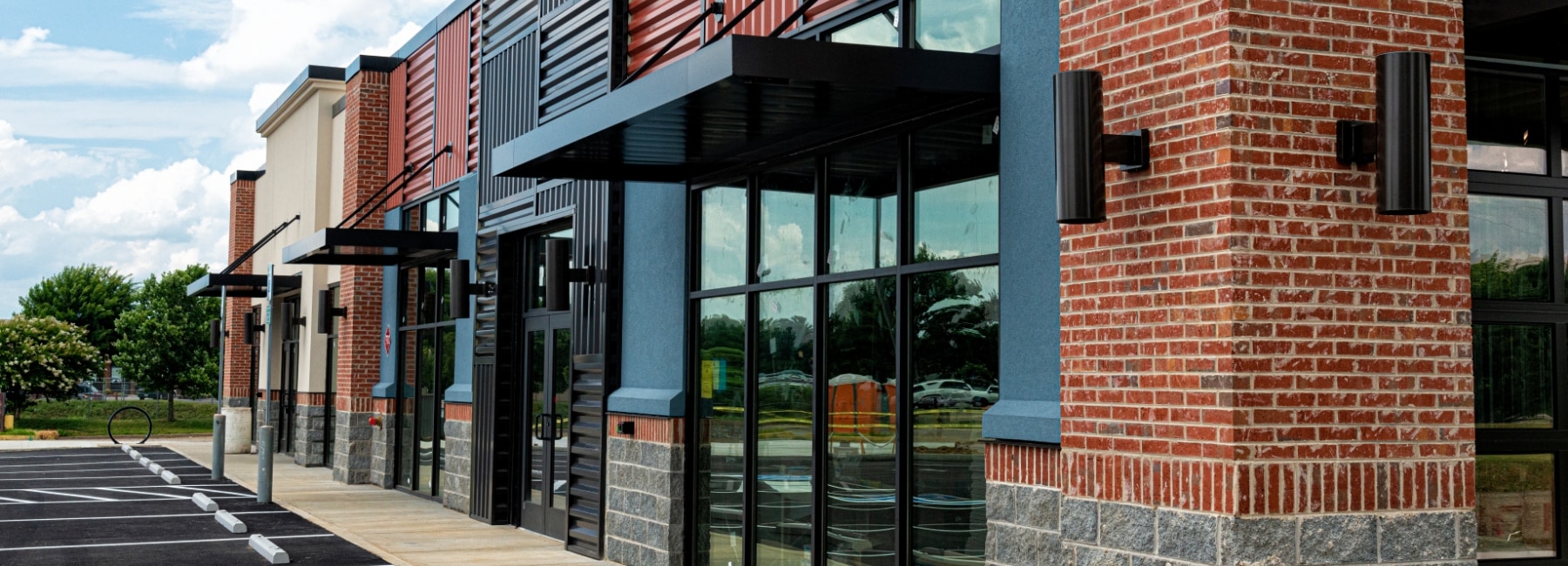Business Content
How to Get Approved for a Commercial Mortgage

If you own a home, you know how residential mortgages work. But commercial lending is a whole different ballgame.
Are you looking to finance a new retail storefront, office space, manufacturing facility, or rental property? If so, it’s important to understand how commercial real estate (CRE) lenders make their decisions.
In this article, we’ll cover the three primary components of CRE creditworthiness, three tips for optimizing your position as a potential borrower, and how to get ready to apply.
3 Key Factors
If your business has its own credit history, you have many free and low-cost options for accessing your score and report.
One of the main differences between personal and business lending is that the latter often involves more risk. That’s why CRE lenders rely on a separate set of standards for reviewing mortgage applications. Here are the top three considerations:
1. Your Debt-Service Coverage Ratio
Whether you’re buying a home or a commercial property, loan officers need to see that you have enough income to cover your mortgage payments. For homeowners, they’ll look at paystubs and tax returns. For businesses, they’ll probably be interested in your debt-service coverage ratio (DSCR), which is determined by the formula (net operating income)/(total debt service). As an example, if your property can generate $600,000 per year and your principal and interest payments amount to $400,000 per year, you’d have a DSCR of 1.5. Many CRE lenders look for a DSCR of at least 1.25, but requirements vary depending on your industry and other financial indicators.
2. Your Track Record
CRE lenders are likely to scrutinize your firm’s history of repaying loans. If your business entity has an established credit history in its own name, lenders may consider its business credit reports and scores from Dun & Bradstreet, Equifax, and Experian. Otherwise, you (and any other principals or owners) may be required to guarantee the loan personally. That means your personal score(s) and report(s) could make or break the deal – and the most important element is your track record of paying your bills on time and in full.
3. Your Collateral and Equity
Mortgages are self-secured loans, which means that they’re primarily collateralized by the same asset they’re financing. This is true for both homes and commercial properties. The difference is that the inherent risks of the business world require CRE lenders to offer lower loan-to-value ratios (LTVs). These days, the typical down payment on a house is 20% to avoid private mortgage insurance, which translates to an 80% LTV. For commercial properties, LTVs typically range from 65% to 80%. That means you’ll have to take a close look at all your business assets and determine what can be liquidated or leveraged to make up the gap. Such assets could include:
- Cash and equivalents
- Marketable securities
- Vehicles and machinery
- Accounts receivable
- Inventory and raw materials
- Intellectual property
3 Ways to Boost Your Chances
As you’ve learned, getting approved for a CRE loan is no mean feat. But that any business can do several things to maximize its chances for success:
1. Check Your Credit
Just like your personal credit score, it’s important to check your business credit score, too. Here’s how to do it. The three credit bureaus that determine your business credit score are Dun & Bradstreet, which measures your business’ payment history on a scale of 1–100; Equifax, which measures your likelihood of repaying loans or of your business failing and develops scores on a 101–922 scale based on those factors; and Experian, which uses a 1–100 scale that’s meant to predict derogatory payment behavior.
2. Follow the 5-3-2 Rule
If your business credit isn’t where you want it to be, try this approach:
- 5: Establish five active trade accounts
- 3: Maintain three business credit cards
- 2: Pay off two loans in full
Note that, unlike your personal credit score and report, commercial creditors and card issuers aren’t generally required to report account activities to the bureaus. So, make sure to ask whether they report and choose your lender and cards strategically.
3. Know the 6 Cs
Virtually any time you need business funding, lenders will evaluate your creditworthiness based on six key criteria. When it comes to CRE, some of these Cs may carry more weight than others, but all of them are worth recognizing and optimizing:
- Capital: Your assets compared to liabilities and the amount of money you’ve invested
- Capacity: Your income and cash cushion to support debt and unexpected expenses
- Collateral: Including cash, receivables, equipment, and other real estate holdings
- Conditions: Including external factors such as the economy, industry trends, and regulation
- Character: Including your personal experience, credit history, and legal judgments or liens
- Communication: How you present your proposed business plan and continue the dialogue
Getting Ready
The final step before applying for a CRE mortgage is gathering and organizing your documentation. Compared to applying for a home loan, this can involve a lot more paperwork. You should be prepared to show your firm’s revenue, expenses, debts, receivables, and cash flow. You’ll also need to furnish recent bank account statements and tax returns. Additionally, you may want to use forecasting tools to project your enterprise’s future revenues. Lenders understand that business comes with no guarantees – but showing that you’re thinking ahead and setting practical goals can go a long way toward establishing a solid financial partnership.
Take the Next Step
Ready to apply? Consult your financial institution today.